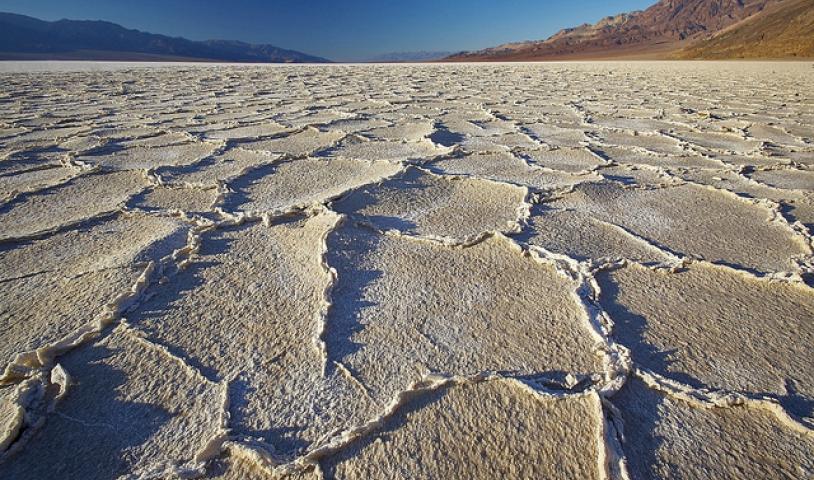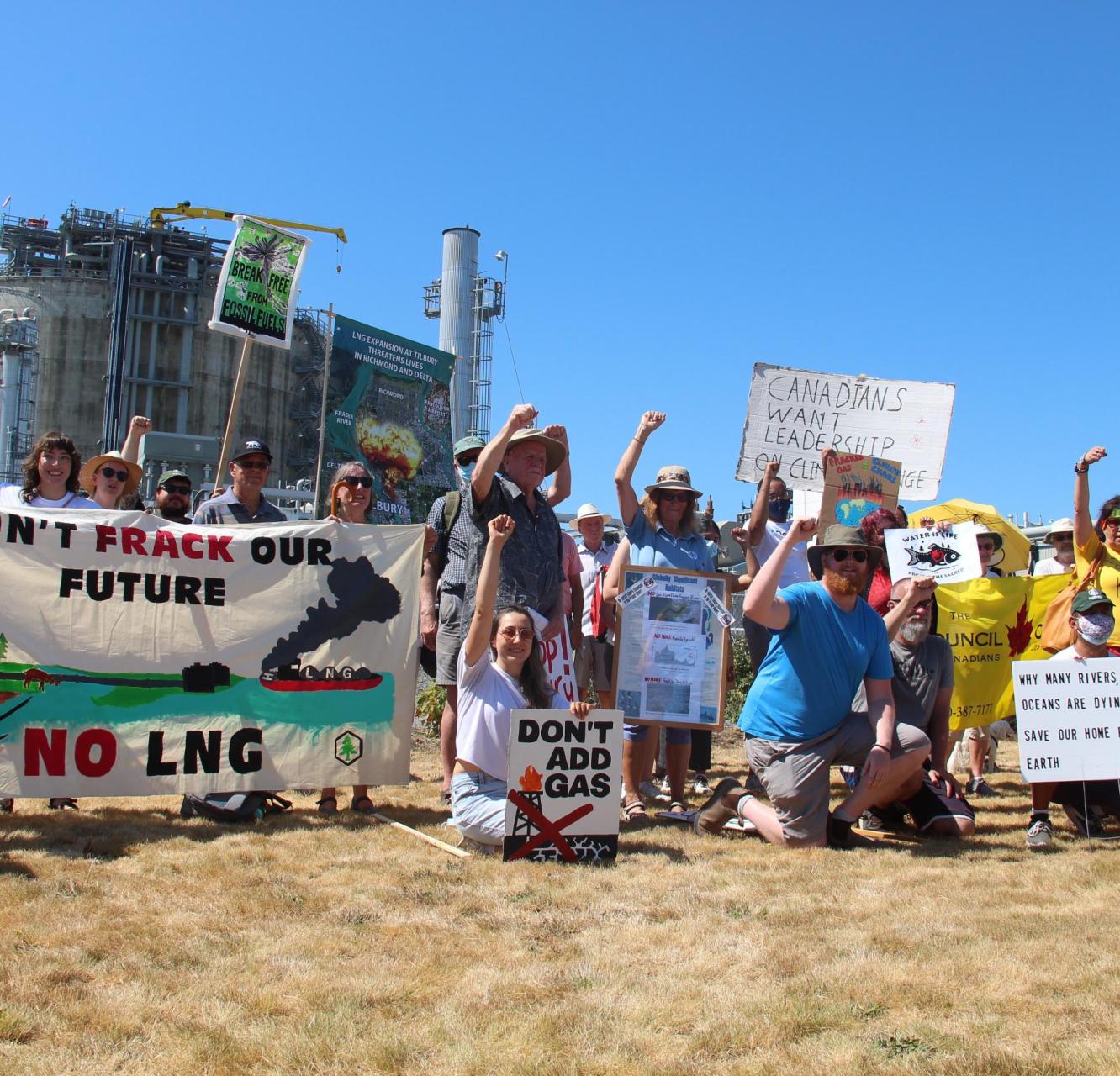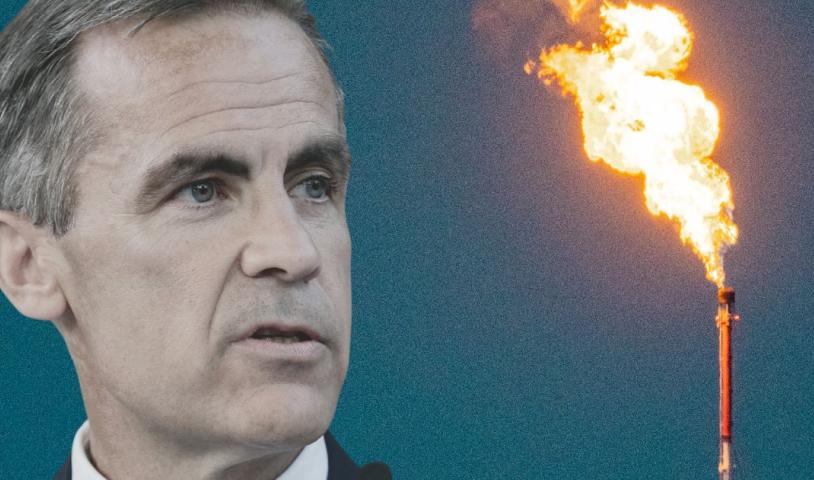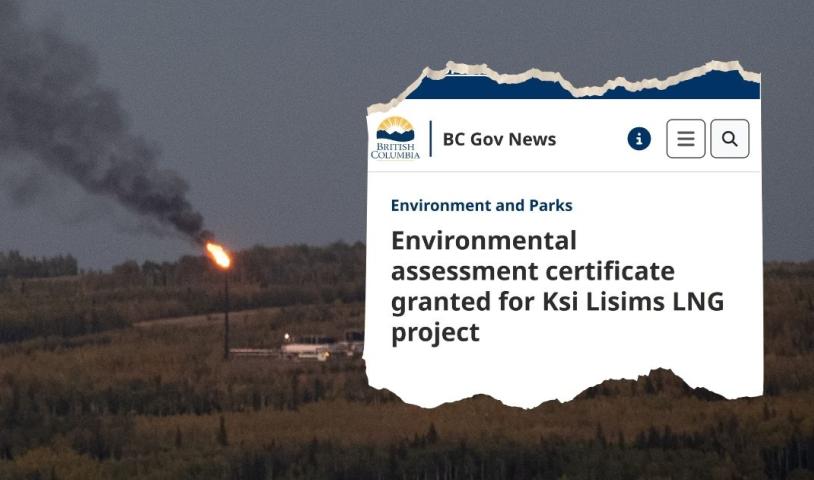How Canada Could Cash In on California’s Drought
Friday, April 10, 2015
The ongoing drought in California, now in its fourth year, is evoking calamity-pitched reactions. As one farmer recently told NBC, he’s nearing “survival mode.” In March, senior NASA scientist Jay Famiglietti warned that the state faces a “harrowing future” unless it begins mandatory water rationing. On Wednesday, April 1, for the first time in the state’s history, California did just that.
The projected outlook for California’s water woes this year is especially dire. The state’s receding snowpack holds just 5 percent of the water that it normally should. “[I]t’s as if half of the state’s water reserves simply vanished,” meteorologist Eric Holthaus wrote recently in Slate. “It’s difficult to imagine the hardship the state will face this summer as the rivers of snowmelt that normally feed the state during the dry season dwindle dangerously.”
In response to the crisis, on March 19 Gov. Jerry Brown announced a $1 billion water plan that contains, among larger conservation measures, rapid food and drinking water relief for the most parched communities. “As the drought continues … we’ll act in extraordinary ways,” he said.
Nearly 900 miles north of Sacramento, in Canada — which has 20 percent of the world’s freshwater resources — there’s simmering unease about how far the state is prepared to go. “[S]omething tells me a 500-year drought may soon re-open a debate that few of us appear willing to undertake,” columnist Daniel Fontaine has argued in the Vancouver edition of the Canadian publication 24 Hours. How long, the thinking goes, will it be before a thirsty United States comes knocking to siphon off Canada’s vast water supply?How long, the thinking goes, will it be before a thirsty United States comes knocking to siphon off Canada’s vast water supply?
Fears of such a scenario are widespread. They have been for years. The notion that a parched United States will come looking to tap Canada’s lakes and rivers is so “controversial” that bulk exports of water were “excluded from the North American Free Trade Agreement,” Fontaine wrote — meaning that no trade provision compels them.
But that doesn’t prevent Canada from profiting off its thirsty neighbor — it’s done it before when droughts have struck the U.S. Midwest. So while some see a threat in California’s misery, others see an increasingly lucrative market opportunity.
Which is: The more desperate California’s situation becomes, the less able it will be to produce the food and fossil fuels needed to run its economy. And as it turns out, both those commodities — which are extremely water-intensive to harvest — are two of Canada’s biggest exports. Dry riverbeds in California could soon be sprouting green dollar signs north of the Canadian border.
Contained in Canada’s exports of food and fossil fuels to the U.S. each day, after all, is the equivalent of five or six Exxon Valdez-size shipments of water, Chris Wood, a water journalist and author of such books as Dry Spring and Down the Drain, told me. And the demand for this de facto water subsidy — as well as the riches to be gained from it — is only getting bigger as California’s drought drags on.
In March, Bloomberg Business revealed that Canadian exports of natural gas to Washington state were at their highest levels since at least 2008. Decreased snowpack has hurt California’s ability to produce hydroelectric power and the state is being forced to make up the shortfall with gas-fired generation. “Canadian gas is the largest single source of gas supply in our very diverse portfolio,” a spokesman for Pacific Gas and Electric, California’s largest electric utility, told Bloomberg.
For the Canadian producers exporting that gas, it was a welcome turn of events. The “shale revolution” that resulted from fracking huge deposits of low-cost gas in West Virginia and Pennsylvania has cut Canada’s gas shipments to the U.S. Midwest by 16 percent. Meanwhile, proposed liquefied gas export terminals in British Columbia are facing serious delays. The U.S. West Coast is “the only place for the gas to go,” Rick Smead, a natural gas analyst with Houston-based RBN Energy, told me.
Desperate for new markets, the Canadian producers are selling their gas at a steep discount — an average of 85 cents less per million British thermal units than the going rate in northern California, Bloomberg calculations show.
Canada’s abundant freshwater helps make that discount possible. The process of fracking, whereby producers fracture gas-containing shale rocks by pummeling them with high-pressure fluid, requires vast amounts of water. In British Columbia, gas producers have been permitted up to 60 million gallons of freshwater each day, according to the environmental group Wilderness Committee. That’s more than twice the daily water needs of Victoria, a Canadian city of 80,000 people.
Yet fracking is a luxury that water-rich Canada can afford. Meanwhile, California regulators in March ordered a dozen oil and gas wells to stop producing amid fears they would pollute rapidly dwindling groundwater supplies. “As we’ve said before, the protection of California’s groundwater resources — as well as public health — is paramount, particularly in this time of extreme drought,” Steven Bohlen, head of oil, gas, and geothermal resources for the California Department of Conservation, has said.
With snowpack levels also dwindling and hydro-production hitting record lows, Californians have been forced to pay for pricier alternatives. The Oakland-based Pacific Institute estimated that utility customers have seen rate increases of $1.4 billion over the last three years, which includes the cost of burning Canadian gas. And this situation could persist for years. “If the hydro’s not there, and if they don’t have easily developable renewable sources … natural gas is really about the only option [Californians] would have for meeting their generation needs,” Smead explained.
That would be an expensive nuisance for California. But the drought’s impact on agriculture, which uses 80 percent of the state’s water, has been devastating. Last year the sector lost about $2.2 billion and put over 17,000 farmers out of work. As a result, the price of greens in Canada went up 3.1 percent in 2014. If the drought doesn’t improve, a study from the B.C. Food Systems Network predicted, the average British Columbia family may pay an extra $30 to $60 on its monthly grocery bill.
That’s assuming the province continues to import two-thirds of its vegetables from the United States. Already there are calls to boost production of crops like lettuce, broccoli, and tomatoes — and not just to meet local demand. Selling them to U.S. markets could be lucrative. “Thirty-eight million people [in California] will be looking for more food and this could be an opportunity for Canadian agriculture,” Sylvain Charlebois, a professor of food systems policy at the University of Guelph, told CBC last year. Since then, falling oil prices have weakened Canada’s currency, meaning that the opportunity is “even more relevant now,” Charlebois told me.
It wouldn’t be the first time Canadian farmers have cashed in on an American drought. In 2012, one of the driest summers in Midwest history wiped out corn and soybean crops, while wetter growing conditions north of the border left “farmers in Western Canada poised to profit nicely off the misery of U.S. growers,” according to a story on BNN.
Though Canada is not known for being a large exporter of corn, in 2012 to 2013, it sold 1 million tons to American corn buyers. It’s too early to say how much Canadian growers will profit from California’s current drought. Yet Charlebois sees evidence that the sector is building its capacity to sell to the United States. New greenhouse investments in Ontario and Quebec are “growing significantly,” he said. “If Americans are looking for more vegetables and fruits, and if Canada is ready to sell some, then why not?”
The boon of Canada’s freshwater reserves has made some worried that it will soon be bullied into spreading the good fortune around. It may only be a matter of time before the situation puts “new pressure on Canada to export water,” wrote Globe and Mail columnist Gary Mason a year ago. “Once that tap is turned on, there may be no stopping it.”“Once that tap is turned on, there may be no stopping it.” Last year, Canada’s ambassador to the United States, Gary Doer, added to such fears by arguing that “five years from now we will be spending diplomatically a lot of our time and a lot of our work [with the U.S.] dealing with water.”
That may be true, but bulk exports of Canada’s water are unlikely to be part of the discussion. Even if California demanded that Canada relieve its thirst, shipping water south presents such massive logistical difficulties as to be almost impossible. “It is essentially non-doable,” Wood, the water journalist, told me. Suppose Canada wanted to redirect water from British Columbia to California. Any canal would have to cross major waterways like the Columbia River. Such a project would require thousands of dams and “an order of magnitude of cement that would cripple western North America’s carbon budget,” said Wood. “It’s a literal pipe dream.”
Shipping water in tankers is another option, he went on, but not in anywhere near the quantities needed to meet California’s demand. State water executives intend to rely on conservation and desalination instead. “Exotic ideas are not on the agenda,” the head of the California Water Association has stated. The environmental group Food & Water Watch recently claimed to have a simpler solution: “Place real limits on the State’s most egregious water users — the agriculture and oil industries.”
Governor Brown has been reluctant to do that. But if the drought continues to get worse, California may soon not have a choice. That in turn will create ever more lucrative market opportunities for water-rich jurisdictions like Canada, which can afford to spend their freshwater resources on producing food and fossil fuels.
“The idea of shipping water to California is a 20th-century way of thinking,” Wood said. “It doesn’t reflect what we’re actually doing.” Canada is practically shipping its water over already — and turning one state’s misery into another country’s profit.
Photo: Badwater, Death Valley National Park, CA. Fikret Onalvia Flickr.




